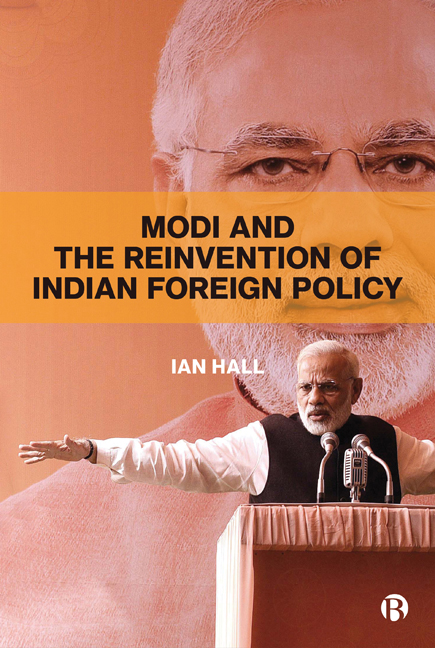Book contents
- Frontmatter
- Contents
- Abbreviations
- Glossary
- Notes on the Author
- Acknowledgements
- Preface
- 1 Introduction
- 2 Nonalignment to Multialignment
- 3 Hindu Nationalism and Foreign Policy
- 4 Modi and Moditva
- 5 World Guru India
- 6 Prosperity and Connectivity
- 7 National Power and Regional Security
- 8 Conclusion
- Notes
- References
- Index
7 - National Power and Regional Security
Published online by Cambridge University Press: 10 March 2021
- Frontmatter
- Contents
- Abbreviations
- Glossary
- Notes on the Author
- Acknowledgements
- Preface
- 1 Introduction
- 2 Nonalignment to Multialignment
- 3 Hindu Nationalism and Foreign Policy
- 4 Modi and Moditva
- 5 World Guru India
- 6 Prosperity and Connectivity
- 7 National Power and Regional Security
- 8 Conclusion
- Notes
- References
- Index
Summary
The Modi government swept to power promising to deliver ‘comprehensive national security’, with a whole of government approach, and ‘zero tolerance’ for ‘terrorism, extremism and crime’ (BJP, 2014a, p. 37). It pledged that it would ‘deal with cross border terrorism with a firm hand’, modernise the military and increase spending on defencerelated research and development. It also declared that it would bolster the nuclear deterrent and ‘study in detail India's nuclear doctrine, and revise and update it, to make it relevant to [the] challenges of current times’ (BJP, 2014a, pp. 38–9). All of these pledges caused some trepidation among both domestic and international observers. A number of analysts expressed concern about what might be implied by a ‘firm hand’ in addressing cross-border terrorism and by the apparent pledge to revise of the nuclear doctrine, in particular. They worried that Modi might take a belligerent line towards Pakistan and that he could be prone to unpredictable or even reckless decision making that could destabilise the relationship with Islamabad, in particular, or indeed Beijing (see Curtis, 2014). In office, however, the Modi government's approach to security issues was more measured than expected, but arguably less robust than it had promised, than its supporters might have hoped, and some outside analysts feared it would be. Here, as elsewhere, the continuities in policy and implementation from earlier governments were clearer than the changes.
Under Modi, India did make progress on internal security in some areas, notably in managing the threat from the Maoist Naxalite militants, which had emerged as a major problem under Singh, and on damping down secessionist violence in the North East. In both cases, anti-poverty programmes, negotiated settlements, and better management of India's porous borders, especially with Bangladesh, played roles in achieving these ends. Elsewhere – notably in Kashmir – Modi's government struggled to cope with unrest and insurgency, and security forces resorted to heavyhanded tactics that attracted both domestic and international criticism (Jaffrelot, 2017, pp. 28–9).
- Type
- Chapter
- Information
- Modi and the Reinvention of Indian Foreign Policy , pp. 125 - 146Publisher: Bristol University PressPrint publication year: 2019



